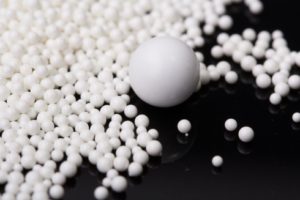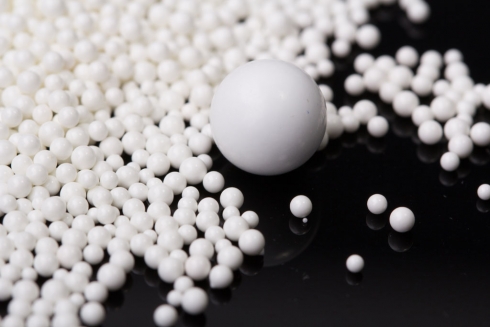 Many industries, such as the paint industries and mining, have requirements to grind materials up into fine powders, and one of the ways to do this is with ceramic grinding beads. For example, these beads are used in mining, ground calcium carbonate, silica, white cement, other minerals, ceramics, chemical products and abrasives.
Many industries, such as the paint industries and mining, have requirements to grind materials up into fine powders, and one of the ways to do this is with ceramic grinding beads. For example, these beads are used in mining, ground calcium carbonate, silica, white cement, other minerals, ceramics, chemical products and abrasives.
There are several different types of media available for grinding materials into a uniform and similar size, such as is required in paint pigments and powders for homogenizing samples. These include both grinding beads and grinding balls. The two are similar, however, grinding beads are a pool of beads which are all within a certain size range and grinding balls are spherical, precision ground to a specific diameter and uniform. These can be made out of many different materials including zirconium silicate or silica (soda lime), They are also available in a variety of sizes and grades either by bulk bottles or dispensed via disruption tubes.
Here are some examples of options. Acid Washed grinding beads (cleaned with acid to remove any small particles and contaminants before being dried then oven baked (yum!) Low Binding grinding beads – these are not only also acid washed but also undergo additional processes that reduces the amount of non-specific binding to their surface. Molecular Biology Grade grinding beads are processed as the previous grades but to higher standards also removing any unwanted impurities. And coated Silica grinding beads which are modified (for example, by the addition amine, sulfhydryl, C3, or C8). High quality grinding beads can help minimize the contamination of the raw materials and provide a stable process over time. More examples of industries they’re used in are mining, ground calcium carbonate, silica, white cement, other minerals, ceramics, chemical products and abrasives.
